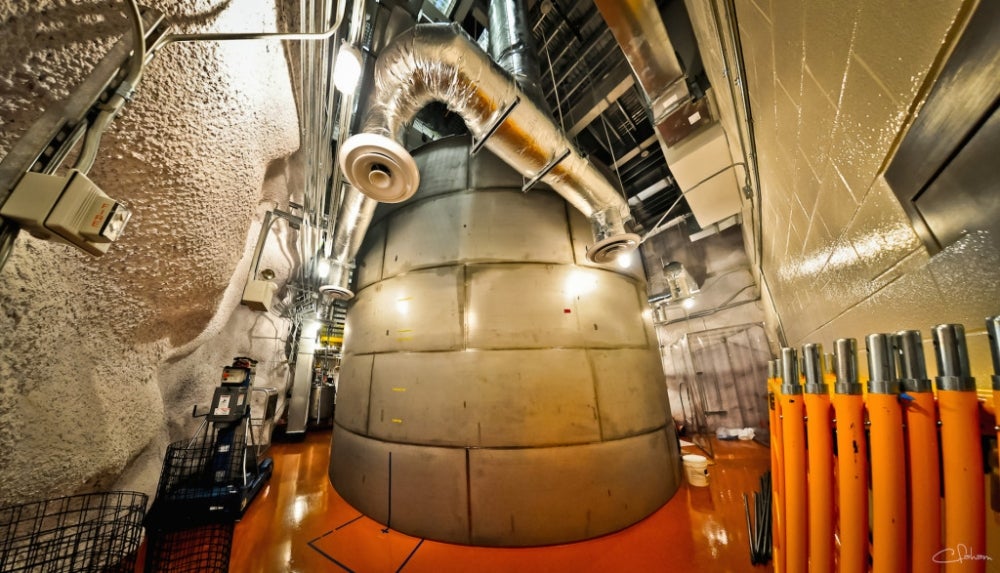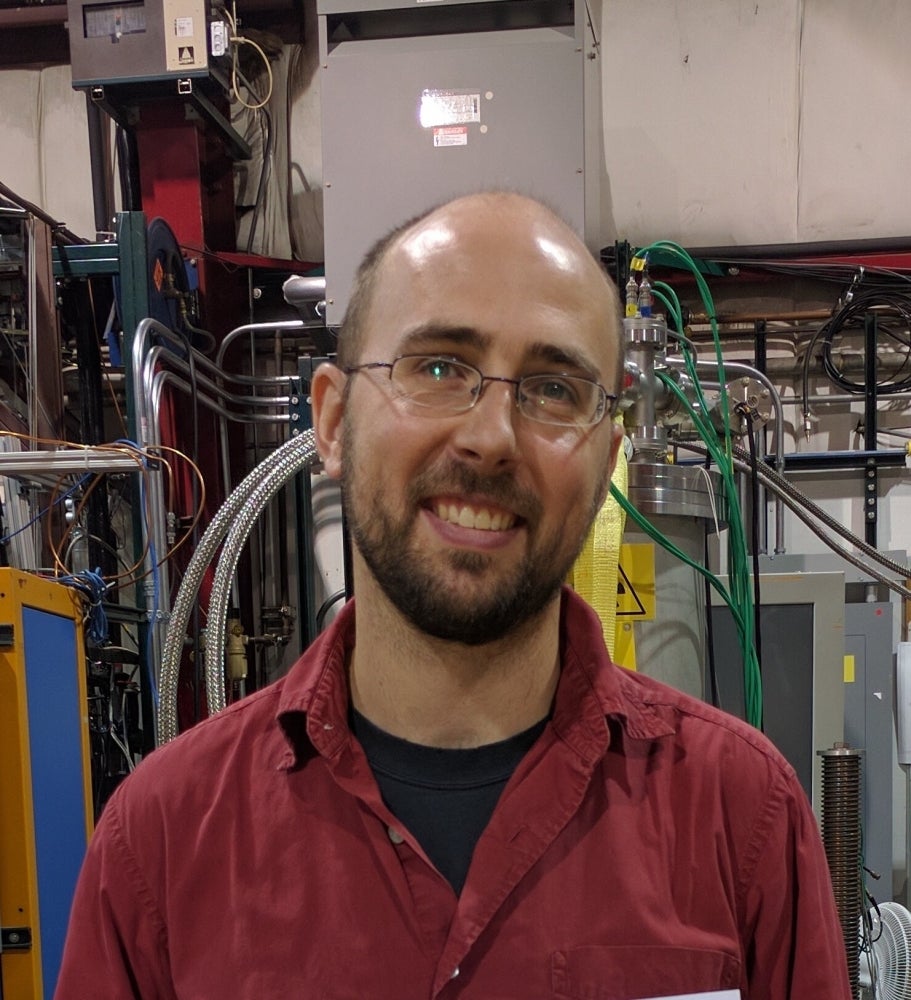
Massive Recognition

The great thing about pure liquid xenon? It’s so dense that enough of it will create an environment so isolated from the rest of the world it could capture signs of dark matter — the elusive material we’ve never seen, yet is said to comprise the majority of the Universe.
That’s according to UC Santa Barbara experimental high energy physicist Hugh Lippincott, who said, “You can get a lot of (liquid xenon) in a small volume, which is nice, because the more mass you have, the more sensitivity.”
“The name of the game is to knock down background noise,” Lippincott explained, of dark matter direct detection experiments like those that are his specialty. Liquid xenon shields itself well from outside radiation, while on the inside it has good signal properties — ideal for exposing weakly interacting massive particles (WIMPs) that are thought to constitute dark matter. Several enormous vats of liquid xenon are tucked deep into the earth around the globe in a number of different direct detection experiments, waiting for the rare moment a WIMP bangs into something.
To date, the result of dark matter detection experiments has been to rule out areas where these hypothetical WIMPs could be — a gargantuan task. But, so far, direct detection hasn’t turned up a single dark matter particle. The next generation of dark matter researchers are turning their eye toward possible WIMPs that are lower in mass than previously thought — “light” dark matter of 1 GeV or less.
Lippincott is one of those researchers, and now, with a Department of Energy Early Career Award, he is poised to make the dark matter detector LUX-ZEPLIN (LZ) — under the Black Hills in South Dakota — sensitive to lighter WIMPs.
“I’m really excited,” said Lippincott, who joined the UCSB faculty in late 2019, from a stint at Fermi National Accelerator Laboratory. “The Early Career Award is a huge honor.” He joins 75 other DOE Early Career awardees from national laboratories and universities across the country in receiving support for their research for the next five years.
“I congratulate Hugh Lippincott on receiving this prestigious award,” said Pierre Wiltzius, dean of mathematical, life and physical sciences at UC Santa Barbara. “He continues a strong tradition of stellar young faculty receiving national recognition. His research, using hydrogen-doped xenon to search for dark matter, holds great promise and we look forward to his continued success on this project and on those he will pursue in the future.”
“The Department of Energy is proud to support funding that will sustain America’s scientific workers and create opportunities for our researchers to remain competitive on the world stage,” said Undersecretary for Science Paul Dabbar. “By bolstering our commitment to the scientific community we invest in our nation’s next generation of innovators.”
Going Small
The not-so-great thing about pure liquid xenon, Lippincott explained, is that it’s not a good target for light dark matter.
“The reason for that is basically kinematics,” he said. Large xenon atoms are sensitive to the presence of heavier-mass dark matter particles, and would release a charge should they bump into each other. But at 1 GeV or less, light dark matter particles would be too faint to register with xenon.
“If you throw a ping pong ball at a bowling ball, you’ll see that the ping pong ball does not give much energy,” he said. “If you have a very light dark matter particle, it can’t give a big kick to heavier particles; you need something lighter to be the target.”
Enter HydroX, Lippincott’s proposal to dope liquid xenon with hydrogen, thus creating a suitable target for light dark matter.
“Hydrogen is the lightest element,” he said, which puts it in the range of light dark matter particles. “The idea is can we dope LZ with hydrogen as a new target to do a search for dark matter down below 1 GeV.”
Adding a non-condensable gas to a cryogenic system is no small feat. The LZ detector — designed and built by a collaboration of British, Korean, Portuguese and American scientists, including UCSB experimental physicist Harry Nelson — is a finely tuned system that runs at 165 degrees kelvin (-163°F/-108°C); introduction of hydrogen gas could interfere with the cryogenics. The project will begin by assessing the ability of liquid xenon to dissolve hydrogen, followed by efforts to understand the amount of signal produced when hydrogen atoms recoil through the liquid.
“There would definitely have to be some changes to the cryogenics,” Lippincott said of the proposed upgrade, which, he hopes, could take place after the initial run of LZ is over, five years from now. Accompanying him on this endeavor will be UCSB mechanical engineering assistant professor Yangying Zhu, who specializes in thermal science and fluid mechanics.
A Leap Forward
The result will be a plan to upgrade LZ’s already high sensitivity by more than an order of magnitude toward lower dark matter masses — a crucial leap forward in a race that continues to heat up. Just recently, news from the XENON1T experiment buried under Italy’s Gran Sasso mountains reported “a surprising excess of events” that are as yet inconclusive, but are of the type that could become regular news as dark matter detection experiments around the world increase their sensitivities and dig deeper into the fundamental structure of the Universe.
“Dark matter is the gravitational binding structure on which the Universe grew,” Lippincott said. “If you look at how the universe evolved from the Big Bang to today, you don’t get the formation of large scale structures of galaxies without dark matter acting as the glue. We wouldn’t be here without it.”



